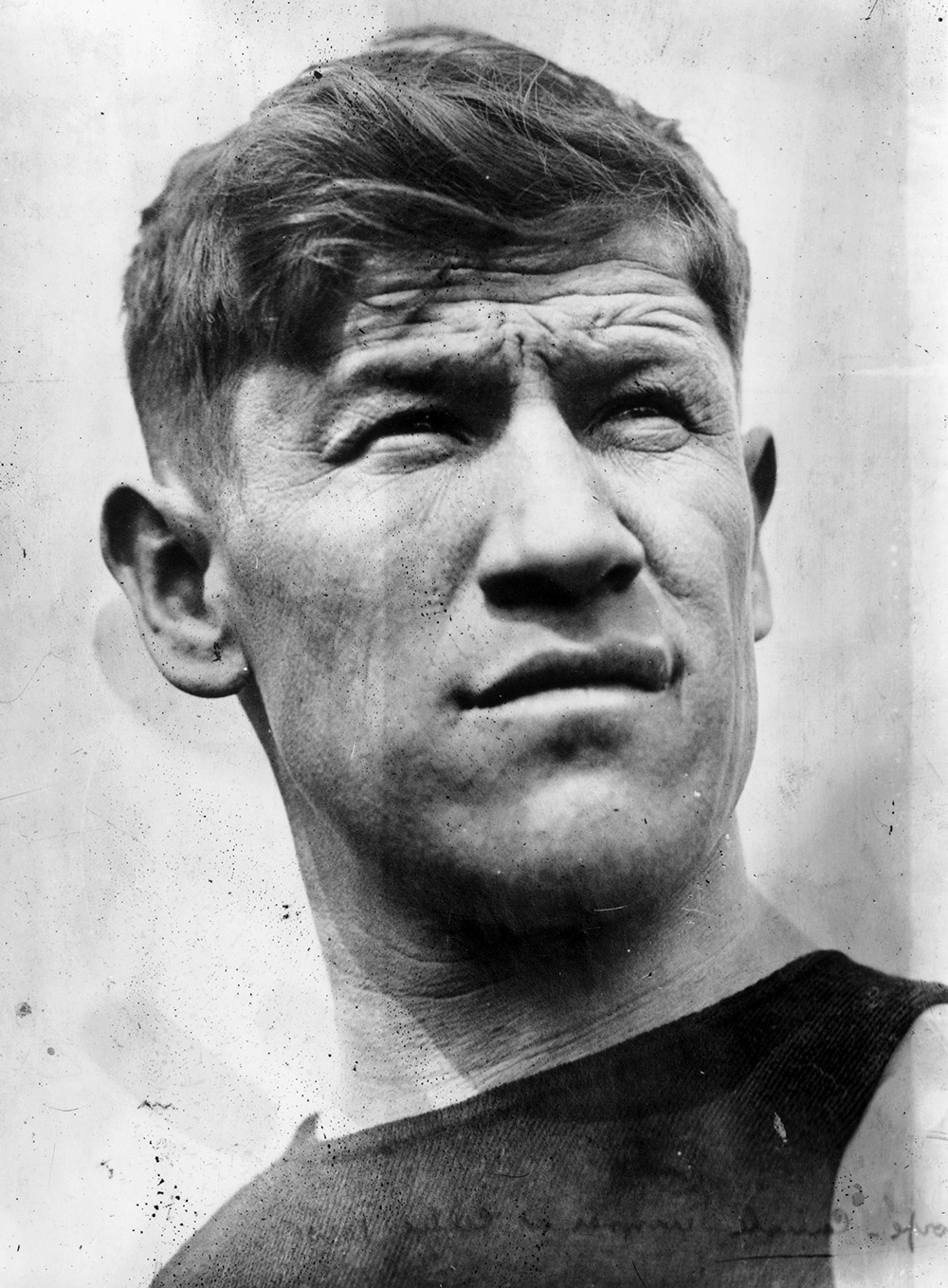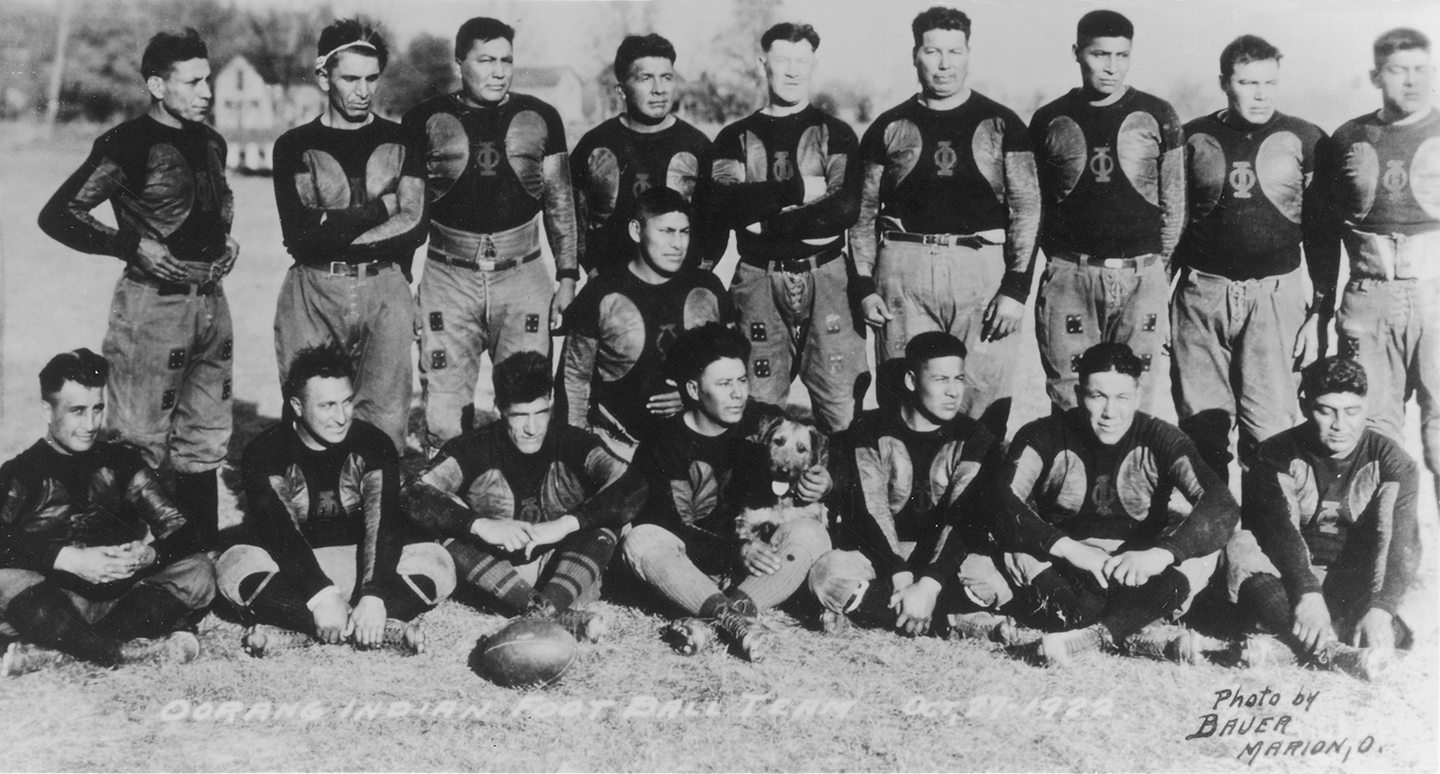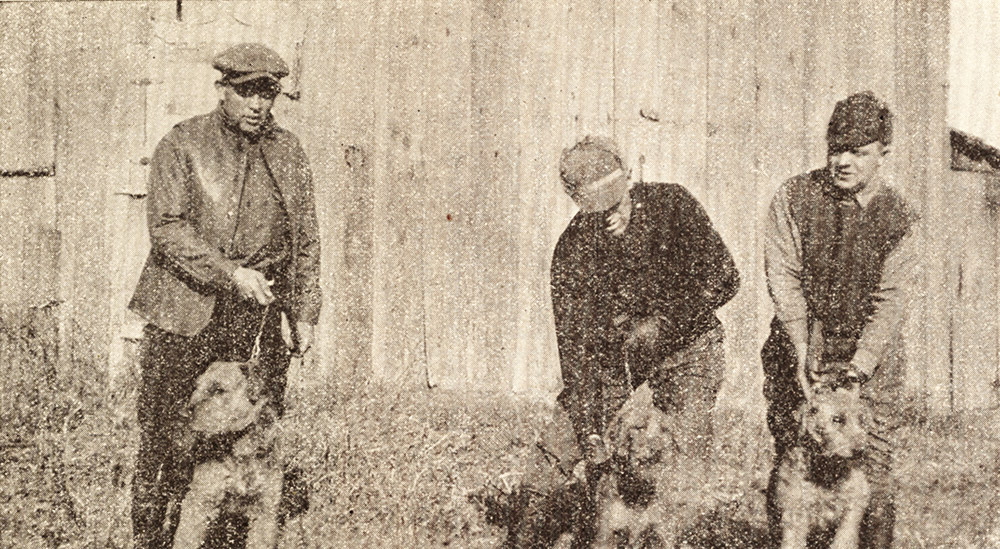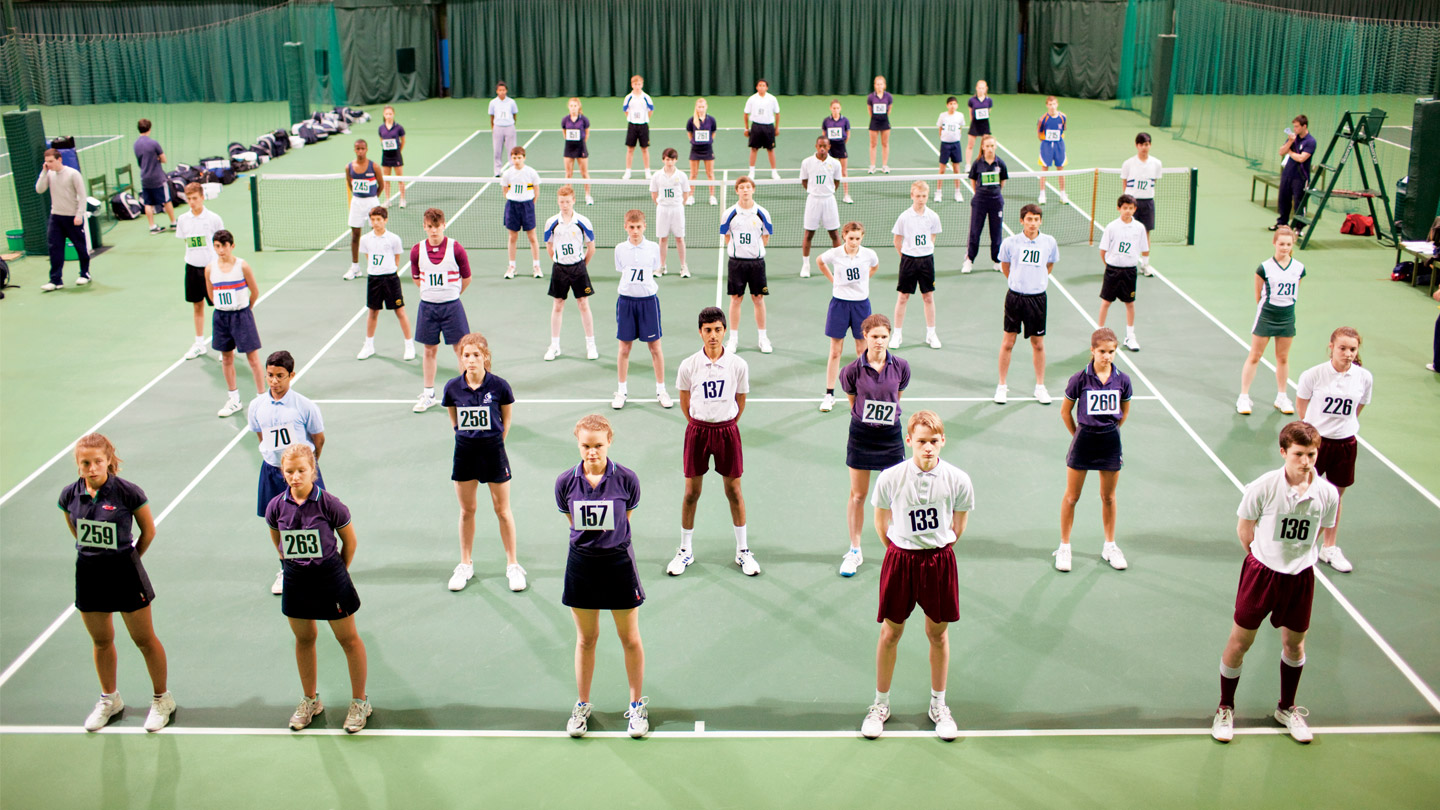King Gustav of Sweden had declared Jim Thorpe the “Greatest Athlete on Earth” at the 1912 Olympics; in 1913, the New York Giants had signed him to a record-breaking professional baseball contract despite their manager never having seen him play; in pro football, the Canton Bulldogs had hired him as a player coach for $250 a week, prompting predictions the team would go bankrupt. Instead they attracted 14,000 fans across his first two games — well above their average of 1,200 per contest. Lingo believed Thorpe could generate those same kinds of attendance numbers for him and was willing to pay handsomely. He offered Thorpe $500 a week to be the player-coach of an all-Native American team, as well as his kennel supervisor. Thorpe agreed and the next year Lingo bought the team that would become the Oorang Indians for $100. La Rue, which had less than 1,000 residents at the time, is still the smallest town to ever host an NFL franchise.
In 1922, when Lingo purchased the Indians, professional football’s popularity ranked a distant second to the college game, which had many of the nation’s biggest stars along with a level of pageantry the pro game still lacked. Travelling squads were common, and the Indians, with their mud-caked, non-regulation field, would have to trek 15 miles to Marion, Ohio just to play their home games, where they only played twice. The on-field product was also a fair bit different from the one we know today: The games were low-scoring, playing both sides of the ball was the norm, passing was a last resort and punting on third down was a common strategy to pin opposing teams in their own territory. Also hurting the game’s popularity was the amount of “dead time in between halves,” says Robert Lingo, Walter’s son.
Before the Oorang Indians could hit the field and start advertising Lingo’s dogs, they needed players. Thorpe, who was raised as a member of the Sac and Fox Nation, had attended the Carlisle Indian Industrial School, the first Native American residential boarding school, and starred for the football team there, leading it to wins over powerhouses like Harvard. He began his recruiting push with his old Carlisle teammates. He also targeted former players from the Haskell Institute, which he’d attended before Carlisle, and from the Sherman Institute in California. The Indians would ultimately field an all-Native American roster — the only one in pro football history — for the 1922 season, featuring 25 men from at least nine tribes including Calac and future Hall of Famers Thorpe and Joe Guyon. Lingo also asked the men to double as kennel workers.











